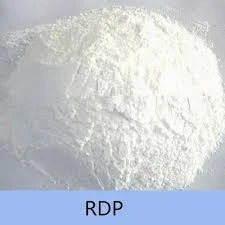
Nov . 12, 2024 21:33 Back to list
hydroxyethyl cellulose viscosity concentration
The Influence of Hydroxyethyl Cellulose Viscosity on Concentration in Various Applications
Hydroxyethyl cellulose (HEC) is a non-ionic, water-soluble polymer derived from cellulose. It is widely utilized in various industries, including pharmaceuticals, cosmetics, food, and construction, due to its advantageous properties such as thickening, stabilizing, and film-forming abilities. One of the key factors that determine the performance of HEC in applications is its viscosity, which is significantly influenced by its concentration in solution.
Viscosity is a measure of a fluid’s resistance to flow, and in the case of HEC, it plays a critical role in how effectively the polymer can perform its intended function. As the concentration of HEC in solution increases, the viscosity also rises. This relationship is crucial because different applications require specific viscosity levels to achieve optimal performance. For instance, in the cosmetic industry, products such as shampoos and lotions often benefit from higher viscosity, which enhances the texture and stability of the formulation, making it more appealing to consumers.
In the pharmaceutical sector, HEC is often employed as a thickening agent in drug formulations, particularly in oral and topical medications. The desired viscosity in these formulations can impact the release rates of active ingredients, thus influencing their bioavailability and efficacy. By adjusting the concentration of HEC, formulators can fine-tune the viscosity to meet the specific requirements of the drug delivery system, ensuring that the medication is effective when administered.
hydroxyethyl cellulose viscosity concentration

Moreover, in the construction industry, HEC is used in cement-based products as a water-retention agent. Here, viscosity is critical; if HEC concentration is too low, the mixture may dry out too quickly, leading to cracks and compromised structural integrity. Conversely, too high a concentration can make the mixture overly viscous, making it difficult to work with. Therefore, striking the right balance in HEC concentration is essential for achieving the desired workability and performance in construction applications.
Another important consideration is the shear rate, which refers to the rate at which the fluid is deformed under applied forces. Hydroxyethyl cellulose exhibits shear-thinning behavior, meaning that its viscosity decreases with an increase in shear rate. This property is particularly advantageous in various applications, as it allows HEC solutions to flow easily during processing, while still providing the needed viscosity during application. This characteristic is particularly useful in 3D printing and coating applications, where maintaining a specific flow behavior is crucial.
Finally, it is important to recognize that the viscosity of hydroxyethyl cellulose can also be affected by other factors, such as the degree of substitution (DS) of the polymer, temperature, and the presence of electrolytes and other additives. Adjusting these parameters can help formulate systems with tailored viscosities for specific industries and applications.
In summary, the viscosity of hydroxyethyl cellulose, influenced largely by its concentration, plays a fundamental role in determining the efficacy of its applications across various fields. By understanding and manipulating the concentration of HEC, industries can develop products that not only meet but exceed performance expectations, highlighting the importance of this versatile polymer in modern formulations.
-
Versatile Hpmc Uses in Different Industries
NewsJun.19,2025
-
Redispersible Powder's Role in Enhancing Durability of Construction Products
NewsJun.19,2025
-
Hydroxyethyl Cellulose Applications Driving Green Industrial Processes
NewsJun.19,2025
-
Exploring Different Redispersible Polymer Powder
NewsJun.19,2025
-
Choosing the Right Mortar Bonding Agent
NewsJun.19,2025
-
Applications and Significance of China Hpmc in Modern Industries
NewsJun.19,2025







